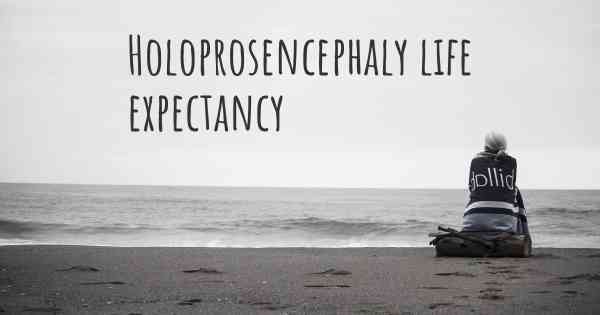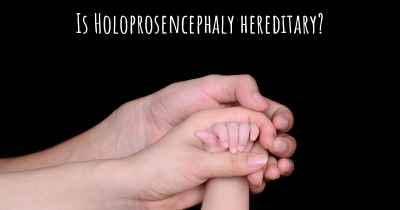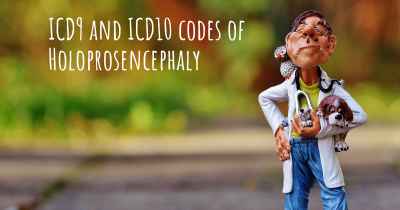What is the life expectancy of someone with Holoprosencephaly?
Life expectancy of people with Holoprosencephaly and recent progresses and researches in Holoprosencephaly

Holoprosencephaly is a rare brain malformation that affects the development of the brain and face. The life expectancy of individuals with Holoprosencephaly can vary significantly depending on the severity of the condition and associated complications. In severe cases, where there is significant brain and organ involvement, life expectancy may be limited, with many affected individuals not surviving past infancy. However, milder forms of Holoprosencephaly can allow for a longer lifespan, with some individuals living into childhood, adolescence, and even adulthood. It is important to note that each case is unique, and prognosis should be discussed with a healthcare professional familiar with the individual's specific condition.
Holoprosencephaly is a rare and complex brain malformation that occurs during early fetal development. It is characterized by the incomplete separation of the brain's hemispheres, resulting in varying degrees of intellectual and physical disabilities. The severity of the condition can vary widely, ranging from mild facial abnormalities to severe cognitive impairments and life-threatening complications.
Due to the wide spectrum of manifestations and associated health issues, it is challenging to provide a definitive life expectancy for individuals with holoprosencephaly. The prognosis depends on several factors, including the specific subtype of holoprosencephaly, the severity of brain abnormalities, the presence of associated birth defects, and the overall health of the affected individual.
Classic holoprosencephaly: This is the most severe form of the condition, where the brain fails to divide into distinct hemispheres. Infants born with this subtype often have significant intellectual disabilities, feeding difficulties, seizures, and multiple physical abnormalities. Unfortunately, the life expectancy for individuals with classic holoprosencephaly is generally shorter, with many not surviving beyond infancy or early childhood. However, it is important to note that some individuals with milder forms of classic holoprosencephaly may live into adolescence or adulthood with appropriate medical care and support.
Semilobar and lobar holoprosencephaly: These subtypes involve partial separation of the brain hemispheres, and the severity of associated impairments can vary. Individuals with semilobar or lobar holoprosencephaly may have a better prognosis compared to classic holoprosencephaly. With early intervention, specialized medical care, and supportive therapies, some individuals can reach adulthood. However, they may still face significant cognitive and physical challenges throughout their lives.
It is important to understand that holoprosencephaly is a complex condition, and each case is unique. The prognosis can be influenced by the presence of additional birth defects affecting other organs, such as the heart, lungs, or kidneys. These associated conditions can further impact the overall health and life expectancy of individuals with holoprosencephaly.
Management and supportive care: While there is no cure for holoprosencephaly, a multidisciplinary approach involving various medical specialists can help manage the associated symptoms and improve the quality of life for affected individuals. This may include neurologists, geneticists, pediatricians, developmental specialists, and therapists (occupational, physical, and speech). Regular monitoring, early intervention programs, and assistive devices can aid in maximizing developmental potential and addressing specific needs.
In conclusion, the life expectancy of individuals with holoprosencephaly can vary significantly depending on the specific subtype, associated birth defects, and overall health. Classic holoprosencephaly tends to have a poorer prognosis, with shorter life expectancies, while individuals with milder forms of the condition may live into adolescence or adulthood with appropriate medical care and support. It is crucial for families and caregivers to work closely with healthcare professionals to provide comprehensive management and supportive care to enhance the well-being of individuals with holoprosencephaly.








